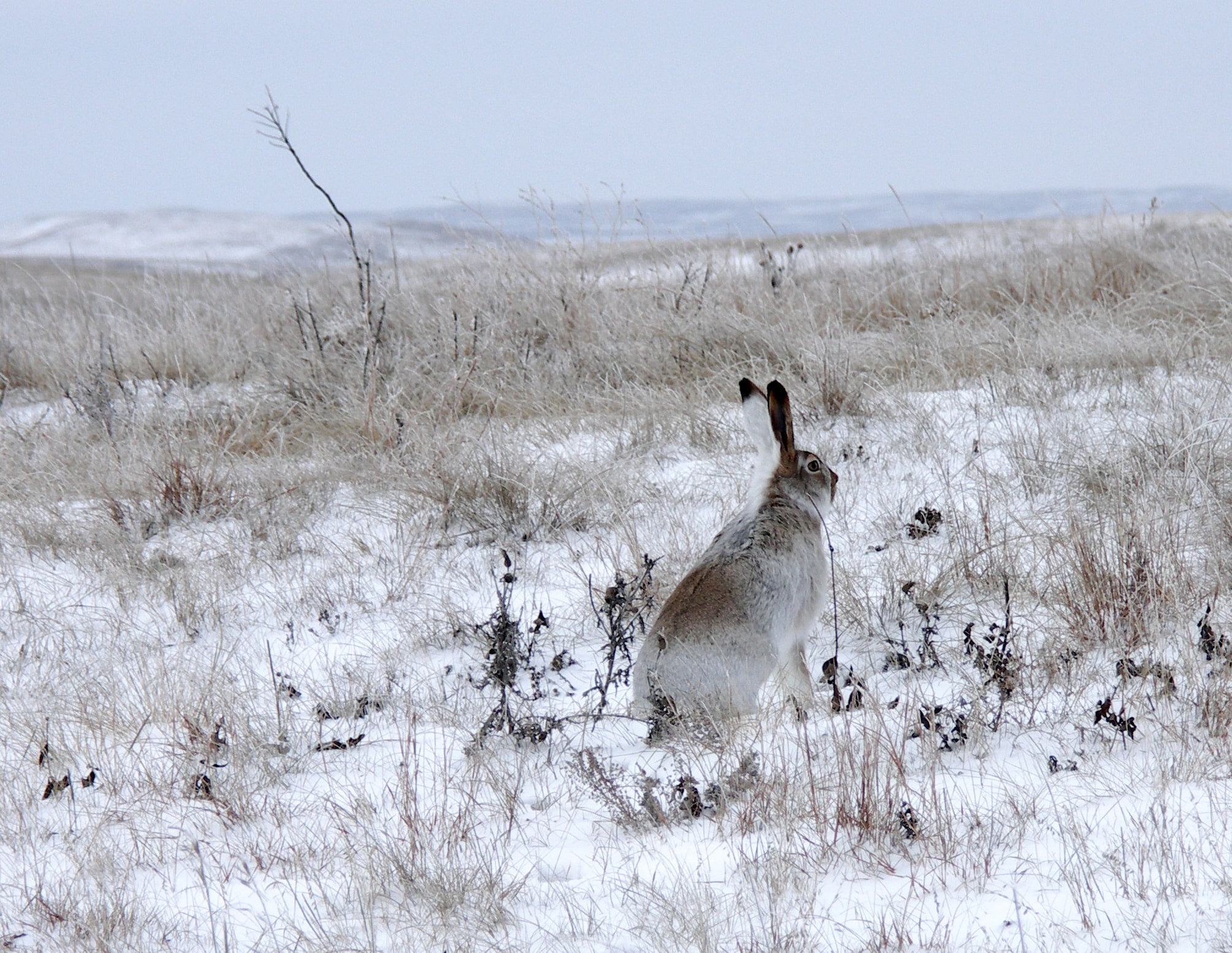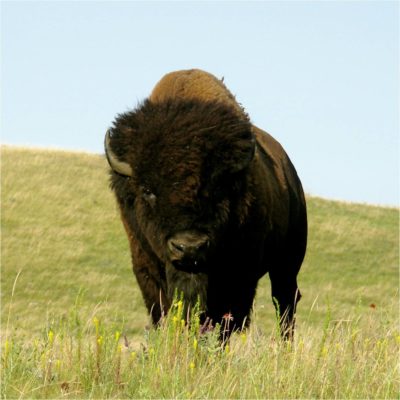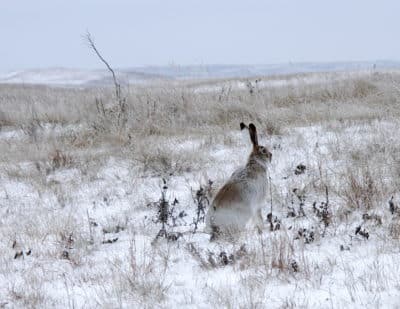
by Ryan Heinen, Land and Livestock Manager | It’s February in Wisconsin and more snow is predicted in the forecast. Lots of conventional farms have their livestock closed up in the barn. But here on Gwenyn Hill Farm the cattle are still out on the pastures, breathing the crisp fresh air and enjoying ample room to roam. Thick hides and long winter hair keeps them warm, while the scattered woodlands around the pasture protect them from the wind. This is mother nature’s barn. It’s best for the animals and best for the land. These cattle have been raised this way for their entire lives, and nature has equipped them to thrive in this environment.

My first experience raising livestock outside during the winter was in northern South Dakota, on the wide open prairie. The 8,000 acre prairie preserve I was working on had a herd of 300 bison. They were used to manage the native grassland, benefit native wildlife, and serve as a source of income for the preserve when they were harvested as grass-fed meat. The bison would stay out on the prairie all winter, using their huge heads to plow away snow to graze the prairie grasses below. Supplemental hay or other feed was not provided and not needed. Thick hides and hair protected them from the bitter cold prairie wind.
While out checking on the bison herd one winter day, I saw that the areas where the bison had grazed and cleared the snow were alive with small songbirds, white-tailed jackrabbits, sharp-tailed grouse, and other wildlife searching for food. Without the bison, wildlife on the prairie would have a hard time getting through the snow to find food. Nature’s system, when allowed to function, is perfect. Each species has a place and purpose, and depends upon other species to survive.
Now when I think about farming and raising livestock, I think about how the natural system would function; then I try to design my farming system to mimic nature as much as possible. I realize farming is not perfect and that sometimes we ask our animals and crops to do unnatural things, such as having calves in the fall, producing more milk than one calf needs, or growing many acres of one crop. When possible I try to have diverse crops, multiple species of plants and animals, and calves born in the spring on clean pasture when green grass, warming weather, and fresh air give them the best start to life. I like grazing livestock to live outside all year eating grass and clover as they were meant to. The fresh air and sun prevent disease and sickness from growing, and the animals on pasture spread their own manure and urine to fertilize the land to grow their next meal.
Gwenyn Hill’s cattle are out grazing this winter in the pasture along with eating the supplemental hay I spread each day, although a recent test showed the superior quality of the winter pasture over the hay. In fact it was dairy quality forage, which the dairy cows grazed until the end of December when their pasture ran out. Today as I spread out a bale of hay on the pasture, I noticed a hawk circling above, hunting for a mouse that was feeding and hiding beneath the left-over hay that partially covers the pasture. The fox and coyote tracks I see in the snow are likely searching for the same mouse.
 The bison herd and the prairie grasses always came through the winter very healthy with vigorous new spring growth. Now I look forward to this spring when the pastures again start to grow, fertilized all winter by the cattle. Then, like the bison in the spring, the calves will start to be born, on the clean grass and fresh air of the pasture, all within a few weeks of each other. Just how nature meant it to be.
The bison herd and the prairie grasses always came through the winter very healthy with vigorous new spring growth. Now I look forward to this spring when the pastures again start to grow, fertilized all winter by the cattle. Then, like the bison in the spring, the calves will start to be born, on the clean grass and fresh air of the pasture, all within a few weeks of each other. Just how nature meant it to be.
Ryan Heinen is the Land and Livestock Manager for Gwenyn Hill Farm

